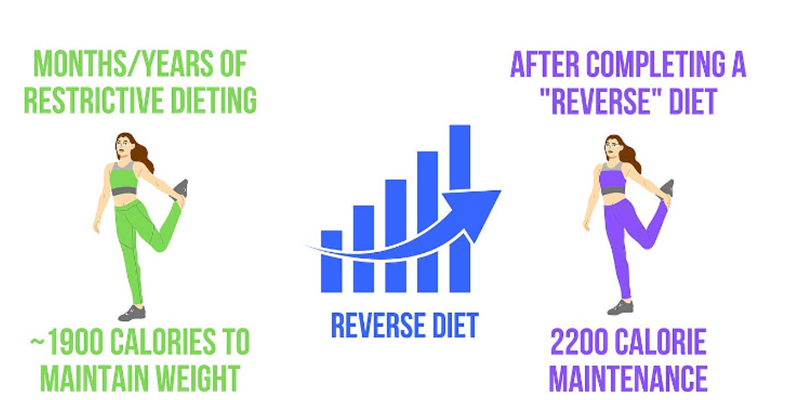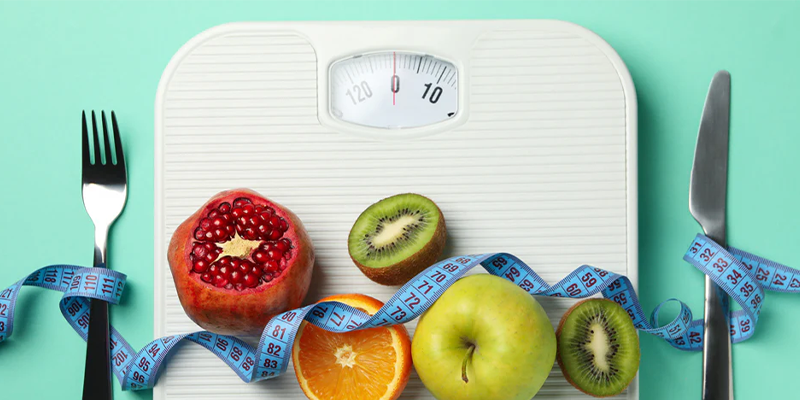The Simple Guide to Effective Weight Loss
By June Youngs
Embarking on a weight loss journey can feel overwhelming. With numerous diets, workout plans, and conflicting advice, it's challenging to know where to start. However, weight loss is all about simplicity and consistency.
This guide has been created to simplify the process and provide practical steps to help you achieve your goals in a healthy and sustainable way. Remember, transforming your body and mind is a gradual process, so be kind and patient with yourself along the way.
Crafting Your Weight Loss Blueprint
The first step to successful weight loss is developing a well-thought-out plan. This isn't about stringent diets or unrealistic workout regimes; it's about setting attainable goals and creating a routine that aligns with your lifestyle and capabilities.
To lose weight, there is a simple equation that can help. Let's take a look at it together:
-
Weight loss, at its core, is a simple equation of calories in versus calories out. To shed one pound of fat, you must create a calorie deficit of approximately 3,500 calories. This can be achieved by consuming fewer calories and increasing physical activity.
-
Break this down into manageable daily or weekly goals; for example, aim to reduce your calorie intake by 500 calories per day or 3,500 calories over a week to lose one pound. This approach makes weight loss a more tangible and achievable goal. Remember, it's not just about eating less but eating smart and moving more.
Using this information, assess your daily routine, food preferences, and physical activity level. Use reliable sources or consult a healthcare professional to understand your caloric needs and how to create a calorie deficit safely.
Remember, your plan should be flexible, realistic, and, most importantly, tailored to you.
Refining Your Eating Habits for Effective Weight Loss
Transforming your eating habits plays a pivotal role in your weight loss journey. Here’s where you can start:
Try smaller plates, more greens, and slowing down. Start by managing portion sizes to avoid overeating, even of healthy foods. Integrate a variety of greens into every meal for a nutrient boost without excessive calories. Practice mindful eating – savor each bite and listen to your body's hunger and fullness cues to prevent overindulgence.
However, don’t overdo it. Completely cutting out your favorite treats can lead to feelings of deprivation and potentially trigger binge eating later. Instead, adopt an 80/20 approach: aim for 80% of your diet to consist of nutritious, whole foods, and allow the remaining 20% for those indulgent treats.
Foods to Limit for Better Weight Loss Results
While no food should be completely off-limits in a balanced diet, being mindful of certain items can significantly impact your weight loss efforts.
Sugary foods, drinks, and carbohydrates that offer little nutritional value can hinder your progress. These items are often high in calories but low in the nutrients your body needs to function optimally, leading to empty calories contributing to weight gain without satisfying hunger.
Here’s what we’re talking about, specifically:
-
Sugary snacks (candy bars, cookies)
-
Sugary drinks (sodas, sweetened teas)
-
Refined grains (white bread, white pasta)
-
Processed foods (chips, microwave dinners)
-
High-fat fast foods (burgers, fries)
-
Baked goods (pastries, cakes)
-
Ice cream and desserts with high sugar content
Yum… We’re aware of how hard it can be to say goodbye to certain foods that bring us joy on a daily basis. It's completely normal to feel emotional about it.
That’s why it's important to maintain a healthy relationship with food. Completely banning these foods from your diet might lead to intense cravings and, eventually, binge eating. By keeping them to less than 20% of your overall dietary intake, you can indulge occasionally without derailing your weight loss goals.
70% OFF Exclusive Deal + 10% Off Sitewide
Power Foods for Effective Weight Loss
Nourishing your body with nutrient-rich foods not only benefits your health but can also assist you in shedding those extra pounds. Let's explore some essential food groups that can act as weight loss superheroes and help you achieve your goals:
Healthy fats
Contrary to popular belief, not all fats are adversaries in the weight loss journey. Healthy fats, found in foods like avocados, nuts, seeds, and olive oil, play a crucial role in feeling satiated and can actually aid in weight management.
Fiber
Fiber stands out for its significant benefits in promoting weight loss. It helps in feeling full, which in turn reduces overall calorie intake. Fiber-rich foods, such as whole grains, fruits, vegetables, and legumes, are essential.
Specifically, psyllium husk, a type of soluble fiber, has been noted for its effectiveness in weight management. Products like ColonBroom Premium harness the power of psyllium husk to support digestive health and aid in weight loss.
Including psyllium husk can help you feel full longer, aid in blood sugar regulation, and support digestive health by promoting regular bowel movements and alleviating bloating.
And, just a quick FYI: supplements like ColonBroom Premium actually taste like strawberry smoothies, making weight loss a bit more tolerable than circling the isles of chicken and kale. Let’s not act like most low-cal foods aren’t bland and a bit… sad.
Greens
Incorporating a variety of greens into every meal is a simple yet effective strategy. Leafy greens like spinach, kale, and swiss chard are low in calories but high in fiber and essential nutrients, making them perfect for a weight-loss diet.
Protein
Adequate protein intake is crucial for weight loss. It helps build and repair muscles, especially if you include exercise in your weight loss plan. Lean proteins like chicken, fish, tofu, and legumes can keep you feeling full longer and reduce the temptation to snack on less healthy options.
By focusing on these nutrient-rich food groups, you're setting the stage for a healthier, more sustainable approach to weight loss.
Get Moving for Faster Weight Loss
Starting an exercise routine can be a game-changer in your weight loss journey. Sure, 80% of your body recomposition happens in the kitchen, but the remaining 20% in the gym takes you further much faster. Here's how to get active and enjoy the process:
-
Find what you love. The best workout is the one you enjoy and can stick to. Choose activities that make you feel good whether it's brisk walking, yoga, swimming, or cycling.
-
Mix it up. Keep your body guessing and prevent boredom by mixing different types of workouts. Alternate between cardio, strength training, and flexibility exercises for a well-rounded routine.
-
Start slow. If you're new to exercise, begin with shorter, less intense sessions and gradually increase both as you get stronger.
-
Daily movement. Beyond structured workouts, look for opportunities to be more active throughout your day. Take the stairs, park further away, or have a dance break at home.
Remember, consistency is key. Aim for at least 150 minutes of moderate aerobic activity or 75 minutes of vigorous activity each week, as recommended by health experts. But more importantly, listen to your body and adjust your routine to fit your lifestyle and preferences.
Hydration – The Most Important Part of Weight Loss
Drinking water seems like the oldest trick in the book, but there are many reasons why it really works. Staying hydrated is crucial for weight loss for several compelling reasons:
-
Curbs false hunger. Often, we confuse thirst with hunger. Drinking water regularly helps you recognize true hunger cues, preventing unnecessary snacking.
-
Reduces water retention. Adequate hydration signals your body that it's okay to release stored water, reducing bloating and water weight.
-
Boosts metabolism. Water can slightly increase your metabolic rate, meaning you burn calories more efficiently, even at rest.
-
Supports physical activity. Proper hydration improves your performance during workouts, allowing you to exercise longer and more intensely.
Aim for 8-10 glasses of water daily, but listen to your body's needs, as factors like activity level and climate can increase your requirements. Make hydration a priority, and you'll see a positive shift in your weight loss efforts.
The Vital Role of Sleep in Weight Management
Believe it or not, your body is hard at work while you're sound asleep, burning calories at a rate of about 50-70 calories per hour. That means in a typical 8-hour stretch of sleep, you could burn anywhere from 400 to 560 calories, which is approximately the same as a moderate workout!
A good night's sleep is a cornerstone of effective weight loss for several more reasons:
-
Regulates hunger hormones. Lack of sleep can disrupt the balance of hunger hormones, leading to increased appetite and cravings for high-calorie foods.
-
Improves metabolism. Adequate rest helps maintain a healthy metabolism, making it easier for your body to burn fat.
-
Enhances exercise performance. Well-rested individuals tend to have more energy and motivation for physical activity, contributing to higher calorie burn.
-
Reduces stress. Sleep helps manage stress levels, which can otherwise lead to emotional eating and weight gain.
-
Supports recovery. Sleep is crucial for muscle recovery and growth, especially if you're engaging in strength training as part of your weight loss regimen.
Strive for 7-9 hours of quality sleep each night. Establish a calming bedtime routine, ensure your comfortable sleeping environment, and minimize electronic device use before bed to enhance sleep quality and support your weight loss goals.
Wrapping It Up
Weight loss doesn't have to be complex. By understanding the basics, like the calorie deficit needed to shed pounds, and incorporating a mix of healthy eating, exercise, hydration, and sleep, you're setting yourself up for success.
Remember, it's not just about losing weight quickly but finding a sustainable path that enhances your overall well-being. Supplements like ColonBroom Premium can support your journey in a gentle, holistic way. Keep it simple, stay consistent, and the results will follow.
We all have been there, trying to lose weight and finding it to be a tough journey. It's natural to feel unsatisfied with low-calorie foods and crave comfort foods. The idea of running on treadmills can be daunting and make you question your sanity. Sometimes, we forget to drink enough water, and that's okay!
Moving to new habits can be a challenge, but it's equally important to be kind to yourself and indulge in things that you've been wanting for a long time. Remember, it's okay to take a break from time to time.



